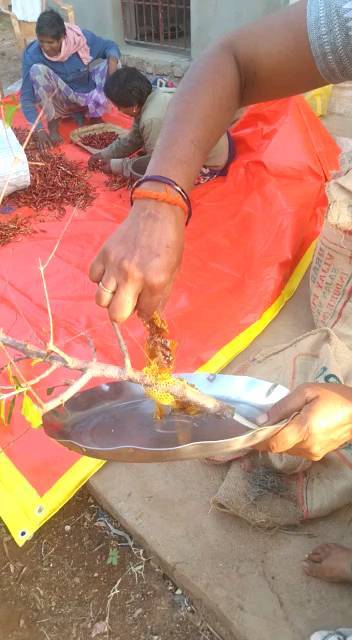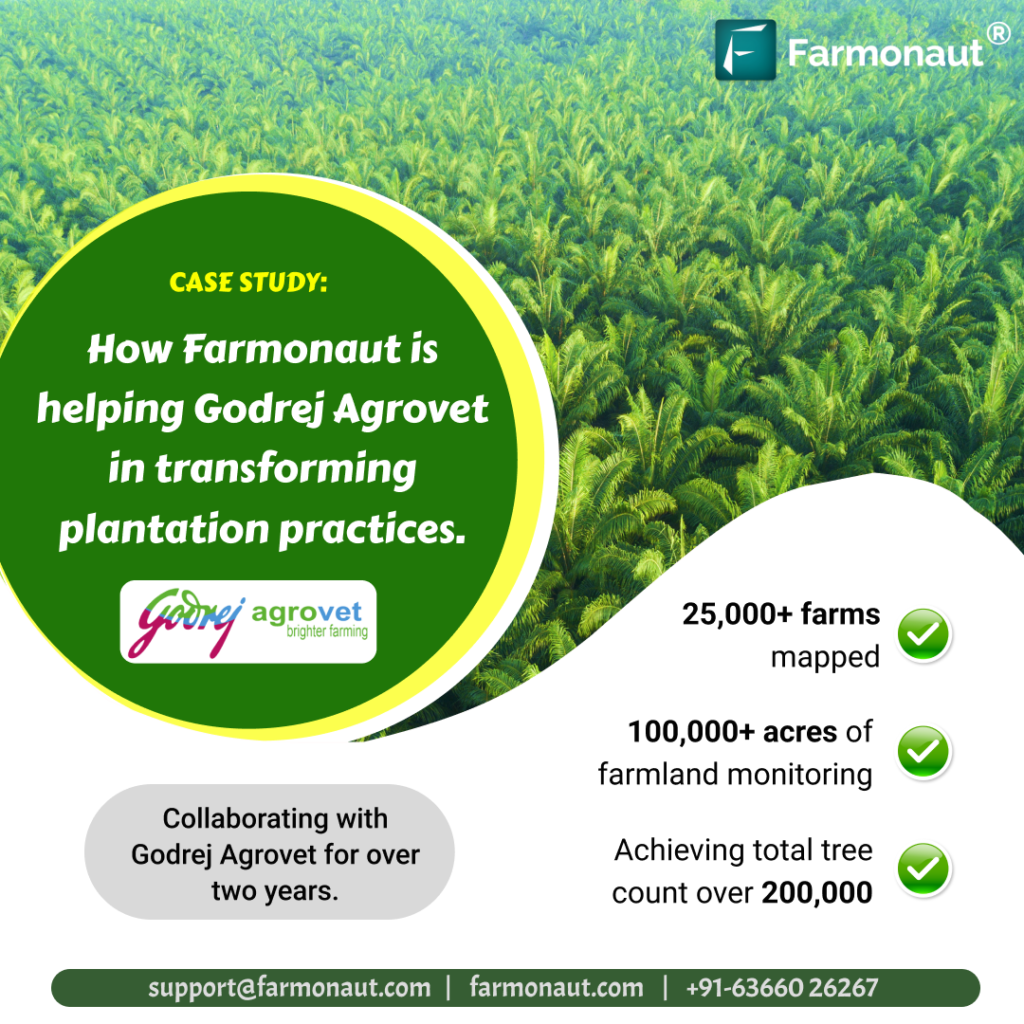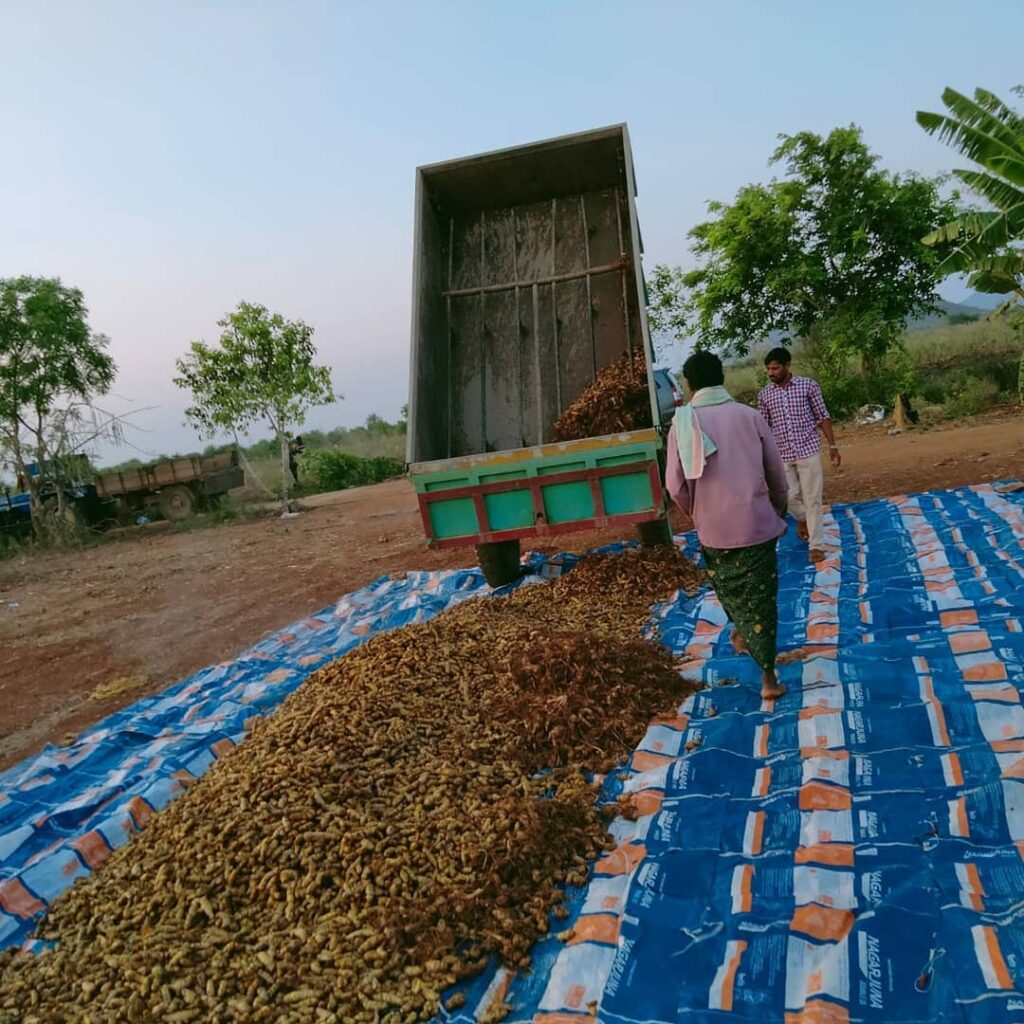Case Studies: Successful Copper Mining Projects Around the World – Pros and Cons (2025)
“Over 2 million tons of copper were produced in the top five most successful mining projects studied for 2025.”
- Introduction: The Global Context for Copper Mining in 2025
- Case Study 1: Escondida Mine, Chile
- Case Study 2: Grasberg Mine, Indonesia
- Case Study 3: Kamoa-Kakula, DRC
- Other Noteworthy Copper Mining Projects in 2025
- Comparative Table: Successful Copper Mining Project Case Studies (2025)
- Key Takeaways: Lessons from Global Copper Mining Operations
- The Role of Modern Satellite Technology in Sustainable Mining Management
- FAQs: Copper Mining Projects 2025
- Conclusion: Responsible Copper Mining for a Sustainable Future
- Farmonaut Subscription Options
Introduction: The Global Context for Copper Mining in 2025
Copper remains a true cornerstone of the global economy as demand surges in 2025, driven by the accelerating green energy transition, proliferation of electric vehicles, and the development of critical infrastructure projects worldwide. While the world’s appetite for copper is not new, the urgency for sustainable and scalable copper mining operations has never been greater.
This article reviews some of the globe’s most successful copper mining projects in recent years, focusing in particular on case studies from Chile, Indonesia, and the Democratic Republic of Congo (DRC). We will meticulously analyze their achievements, pros and cons, environmental and social impacts, as well as cutting-edge technological innovations. Our goal is to distill key lessons that these projects offer for ensuring responsible, sustainable mineral extraction in 2025 and beyond.
Let’s take a deep dive into the world’s largest and most significant copper mines—and discover how their legacy shapes the path forward for successful mining projects worldwide.
Case Study 1: Escondida Mine, Chile — Setting the Standard in Scale and Sustainability
Overview of Escondida Mine
Location: Atacama Desert, Chile
Operator: BHP (majority), with partners
Start Year: 1990
Estimated Annual Production: 1.2 million tons copper (2025 forecast)
The Escondida Mine commands an unparalleled place in the world of copper mining projects—it is the largest copper mine globally, and its continued success has profound implications not only for Chile’s economy but for the global copper market.

Pros: Achievements & Innovations
- Exceptional Scale: By producing over 1 million tons annually, Escondida achieves economies of scale, thereby reducing unit costs per ton of copper
- Technological Innovations: Adoption of automation and remote operations enhances safety, productivity, and efficiency
- Significant Economic Contributions: The mine is a powerful engine for job creation, local employment, and export revenues for Chile.
- Efficient Logistics: Advanced infrastructure ensures seamless handling of materials, processing ore, and exporting copper globally.
- Environmental Mitigation Efforts: Introduction of innovative water recycling systems and renewable energy integration has been a model for sustainable mining operations.
Cons: Challenges & Concerns
- Water Scarcity: Located in the hyper-arid Atacama Desert, water scarcity poses ongoing, critical challenges since water is a vital input in copper extraction and processing. Escondida has often been scrutinized for competing with local agricultural needs.
- Environmental Concerns: Despite strong mitigation efforts, habitat disruption and issues related to tailings management remain persistent challenges.
- Social License to Operate: Managing relationships with local communities is a complex, ongoing responsibility. Transparency and inclusion in decision-making remain vital.
Environmental and Social Impact
- Environmental: Innovations in water recycling in recent projects at Escondida have cut operational water use by up to 40%, minimizing the mine’s footprint on local aquifers and fragile desert ecosystems.
- Social: Hundreds of jobs for regional communities, investment in education and skills, and positive contributions to the social fabric of mining provinces.
Key Lessons from Escondida
- Scale matters, but only when paired with sustainability. Large mines can lead in green innovation.
- Investment in technological upgrades (automation, AI) and water management is essential to long-term viability and regulatory approval.
- Securing a robust social license to operate through engagement and ongoing benefits sharing is non-negotiable.
For mining companies seeking actionable environmental data, Farmonaut’s carbon footprint monitoring solutions offer real-time satellite tracking of emissions and land use—vital for reporting and sustainability compliance.
“Innovative water recycling in one 2025 case study cut operational water use by 40%, minimizing environmental impacts.”
Case Study 2: Grasberg Mine, Indonesia — High Ore Grades Amid Logistical Hurdles
Overview of Grasberg Mine
Location: Papua, Indonesia
Operator: Freeport-McMoRan
Start Year: 1988
Estimated Annual Production: ~700,000 tons copper (2025 projection; also significant gold output)
Nestled in the remote highlands of Papua, the Grasberg Mine is among the largest copper and gold deposits worldwide. Its story is defined by exceptional ore grades and technological prowess, but also by logistical hurdles, environmental concerns, and the sociopolitical complexity of operating in Indonesia’s challenging terrain.

Pros: Achievements & Innovations
- High Ore Grades: Grasberg has benefitted from extremely rich copper and gold deposits, enabling continued profitability even as prices fluctuate.
- Advanced Mining Practices: Deployment of block caving, deep underground mining, and high-tech logistics for handling remote operations efficiently.
- Community Engagement: Over recent years, Grasberg has intensified community engagement programs to bolster local development.
- Employment: The project is a vital source of employment for local communities across Papua.
Cons: Challenges & Concerns
- Political and Social Conflicts: Grasberg’s operations have previously been disrupted by political instability and disagreements with local governments and indigenous communities.
- Environmental Impact: Concerns persist regarding waste disposal in rainforest watersheds and habitat disruption, despite substantial mitigation efforts.
- Logistical Hurdles: Remote location in rugged terrain presents formidable challenges in both infrastructure development and materials transport.
Environmental and Social Impact
- Environmental: Complicated by sensitive rainforest and mountainous terrain. Controversies continue over tailings and waste management.
- Social: Thousands of jobs created; yet, ongoing need for local community inclusion and benefit sharing to avoid conflict.
Key Lessons from Grasberg
- Strong Stakeholder Management: Inclusive dialogues with local communities, government, and NGOs are essential—especially in politically sensitive contexts.
- Environmental Accountability: Modern copper mining projects must continually upgrade their waste management practices to protect unique ecosystems.
- Infrastructure Needs: High-value ore is not enough—robust infrastructure and logistics are just as critical for successful operations.
Technological Innovations at Grasberg
- Core sampling with AI analysis for more efficient resource management
- Automated haulage and conveyor systems in deep tunnels increase safety and productivity
Financial access is crucial for mining and agriculture in remote regions. Farmonaut’s satellite-based verification for crop loans and insurance streamlines financing by reducing fraud and expediting field verification—a boon for mining-linked communities and supply chains.
Case Study 3: Kamoa-Kakula, Democratic Republic of Congo — A New Era in High-Grade Mining Projects
Overview of Kamoa-Kakula Mine
Location: Copperbelt, Democratic Republic of Congo (Kolwezi region)
Operator: Ivanhoe Mines with international partners
Start Year: Commercial production 2021
Estimated Annual Production: 400,000 tons copper (2025 estimate, with plans for >600,000 tons)
The rapid rise of Kamoa-Kakula is testament to how modern mining projects—backed by superior ore grades and technology—can transform both local economies and global copper markets. With some of the highest copper concentrations found anywhere in the world, the project exemplifies sustainable mineral extraction practices amidst the significant risks posed by political instability and infrastructure gaps in the DRC.

Pros: Achievements & Innovations
- Cutting-Edge Processing: Fast adoption of advanced ore processing technologies for optimal copper recovery.
- High-Grade Reserves: Grades averaging over 5% copper—among the industry’s very best—enabling superb unit costs and profitability.
- Employment and Economic Development: Expansion has brought new jobs and skills training to an underdeveloped region, supporting social and economic growth.
- Corporate Social Responsibility: Early emphasis on community development programs in concert with environmental stewardship.
Cons: Challenges & Concerns
- Political Instability: Ongoing risks from government changes and fluctuating regulations, which can threaten project continuity.
- Infrastructure Deficits: Inefficient road, power, and logistics networks challenge both operations and copper export reliability.
- Environmental Management: Need for rigorous management of tailings and habitat disruption with pressure to uphold sustainability standards.
Environmental and Social Impact
- Environmental: Forward-looking initiatives to minimize water usage and tailings, plus investments in cleaner energy for ongoing sustainability.
- Social Impact: The project has directly and indirectly supported thousands of jobs and has improved regional livelihoods through community investments.
Key Lessons from Kamoa-Kakula
- Resource Quality Matters: High-grade ore drastically reduces environmental impact per unit produced while strengthening profit margins.
- Adopting agile, technologically advanced management systems is vital for global competitiveness.
- Partnership with the Community: Building trust with local stakeholders from the outset can secure long-term operational stability.
For mining and agribusinesses operating at scale, Farmonaut’s large-scale project management tools enable remote site monitoring via satellite imagery, speeding up operational audits and optimizing resource allocation across vast sites.
Other Noteworthy Copper Mining Projects in 2025: Emerging Success Stories
- Oyu Tolgoi (Mongolia): A cutting-edge underground project focused on automation, energy efficiency, and transparent revenue sharing with the local government.
- Cobre Panamá (Panama): Demonstrates rapid development, use of renewable energy for processing, and water conservation, but ongoing deforestation and social disputes highlight the need for continuous improvement.
- Resolution Copper (USA): A future-oriented project that has set benchmarks for environmental permitting, indigenous consultations, and the use of AI-based exploration.
Innovation in satellite mineral exploration, like those enabled by Farmonaut’s crop plantation and forest advisory tools, is transforming how companies approach both mine sustainability and resource conservation. These resources provide actionable data for both mining and environmental management teams.
Comparative Table: Successful Copper Mining Project Case Studies (2025)
Table: This comparative summary synthesizes the pros, cons, environmental and social impacts, technological innovations, and key lessons from each studied mine, driving home the focus keyword: Case Studies: Successful Copper Mining Projects Around the World: Pros and Cons.
Key Takeaways: Lessons from Global Copper Mining Operations in 2025
- Balancing Resource Quality and Sustainability: High-grade ore delivers economic efficiency but only when joined with rigorous environmental management and community engagement.
- Technological Innovation is Imperative: Mines implementing automation, AI-driven ore sensing, satellite-based monitoring, or blockchain traceability stand out for productivity, transparency, and risk reduction.
- Water Management is a Universal Challenge: Advanced recycling and desalination are now best practices, especially in arid or ecologically sensitive regions.
- Community Inclusion is Non-Negotiable: The stability and longevity of mining operations depend on delivering real, sustainable benefits to local communities.
- The Green Transition Drives Demand—and Scrutiny: As electric vehicles, renewable energy, and low-carbon technologies drive copper demand, projects face stricter environmental and social expectations.
- The Future is Data-Driven: Satellite analytics, digital resource management, and real-time impact tracking enable more sustainable mineral extraction and regulatory compliance.
The Role of Modern Satellite Technology in Sustainable Mining Management
In the context of responsible copper mining, embracing satellite and AI-driven resource management tools is not a luxury—it’s a necessity.
- Real-time satellite monitoring empowers companies to detect habitat disruption, track environmental footprints, and optimize operational logistics remotely.
- AI-based advisory systems support predictive maintenance, risk management, and early warning for sustainability concerns, from tailings leaks to unauthorized land use.
- Blockchain-based traceability establishes end-to-end supply chain transparency, crucial for responsible sourcing and regulatory compliance.
See how Farmonaut’s product traceability can verify mineral origin and reduce supply chain fraud in global mining operations. - Fleet and resource optimization ensures optimal use of vehicles and machinery, reducing both costs and mining’s carbon footprint.
Discover Farmonaut’s fleet management for real-time tracking of mining vehicles, reducing waste and improving safety across large sites.
Access Farmonaut’s satellite-driven insights via Web, Android, or iOS for real-time mining, agricultural, and infrastructure monitoring.
API users: Explore Farmonaut’s Mining, Weather & Satellite API and view the Developer Documentation here.
FAQs: Copper Mining Projects in 2025
What are the main drivers for copper demand in 2025?
Electric vehicle production, renewable energy transition, and global infrastructure expansion are the primary forces spurring copper demand in 2025. Additionally, smart technologies and connectivity are increasing copper use in electronics.
What are the key environmental concerns in large-scale copper mining?
Water usage and scarcity, habitat disruption, tailings and waste management, and carbon emissions are the main environmental concerns. Modern projects focus on minimizing environmental footprints with recycling, cleaner energy, and innovative extraction methods.
How are social issues being addressed in successful mining projects?
Leading mines invest in local employment, skills training, education, and open dialogue with regional communities. Social license to operate now requires broader and deeper stakeholder inclusion.
What technological innovations are shaping the future of copper mining?
Application of AI for exploration and resource management, automation in processing, satellite-based environmental monitoring, and blockchain-based traceability solutions are redefining operational efficiency and transparency.
How can satellite technology improve mining management?
Satellite monitoring provides unbiased, real-time data on land use, vegetation changes, water stress, and infrastructure—enabling swift action to protect resources, optimize yields, and maintain compliance with environmental and social standards.
How can stakeholders ensure copper mining aligns with climate and ESG goals?
By combining high-grade resource extraction with investing in renewables, water stewardship, stakeholder engagement, and transparent reporting, mines can align with global climate and ESG (Environmental, Social, and Governance) expectations.
Conclusion: Responsible Copper Mining for a Sustainable Future
Case Studies: Successful Copper Mining Projects Around the World: Pros and Cons demonstrates that each leading project—be it Escondida (Chile), Grasberg (Indonesia), or Kamoa-Kakula (DRC)—showcases a unique mix of scale, innovation, and environmental management that sets benchmarks for the industry. Yet, the cons—challenges of water scarcity, habitat protection, political risk, and community relations—remind us that growth must come with responsibility.
As the world moves deeper into the green transition—with demand for copper surging thanks to electric vehicles and renewable infrastructure—the path forward for mining is clear. It demands innovation, real-time data-driven management, and relentless pursuit of sustainable, socially inclusive practices.
The story of copper is still being written. Its future will be determined by how we—governments, businesses, local communities, and technology providers—rise to meet the challenges of tomorrow’s connected, low-carbon world.
Farmonaut Subscription Options
Farmonaut offers subscription-based access to advanced satellite, AI, and blockchain resource management tools for agriculture, mining (including copper projects), infrastructure, and environmental monitoring. View pricing and packages below.











